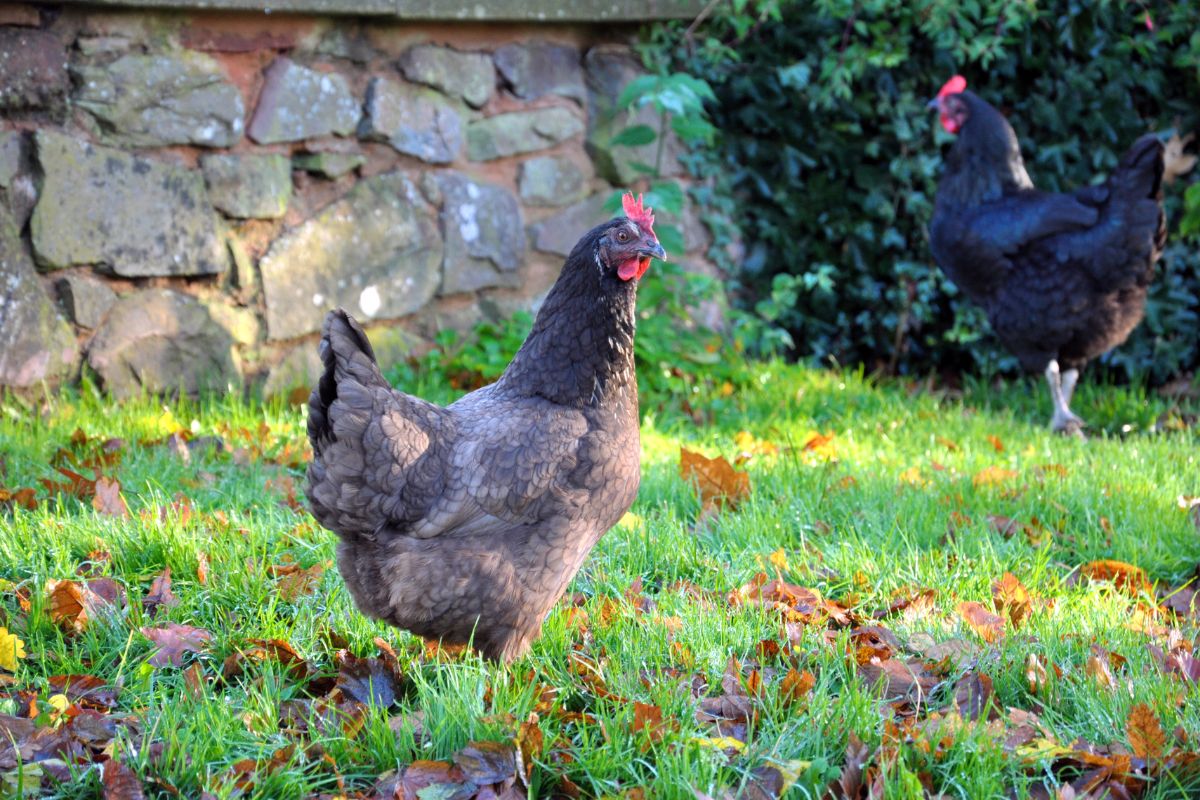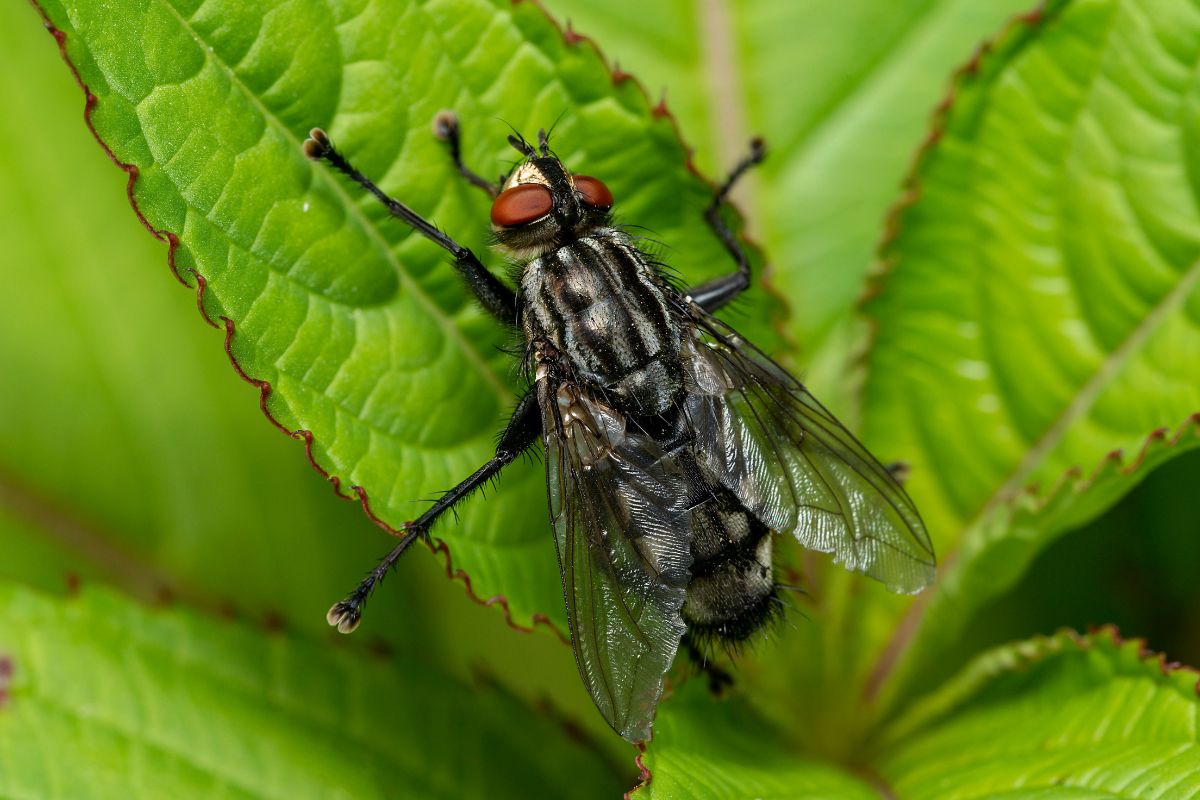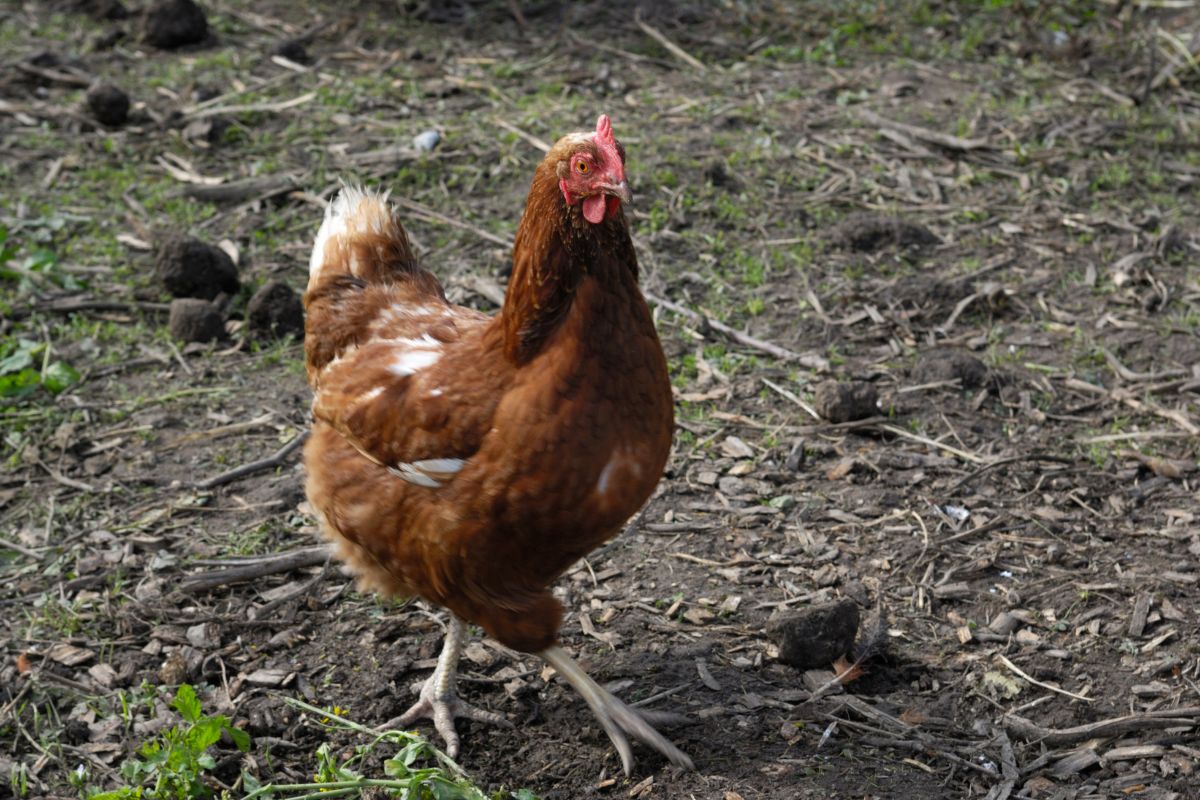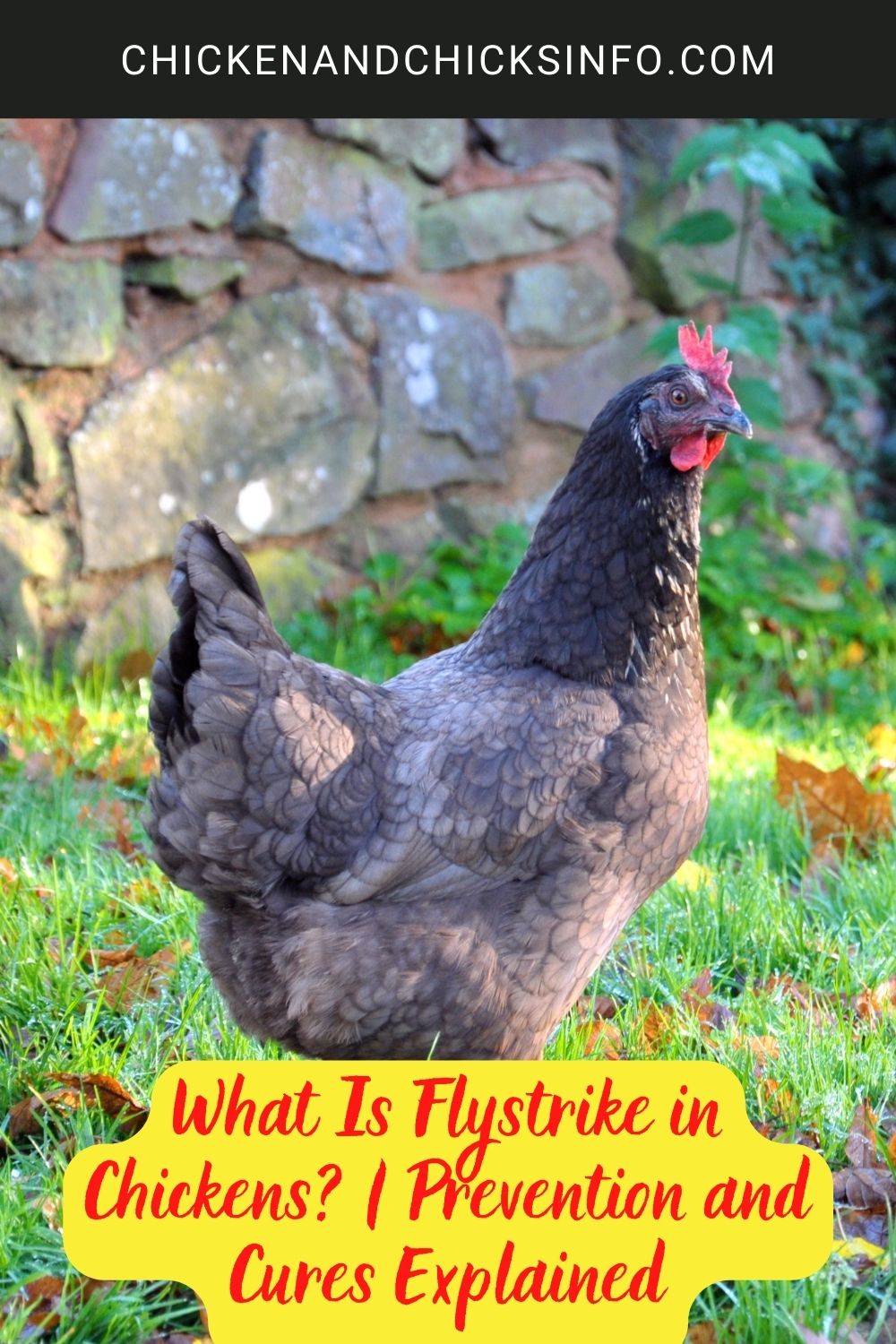
Seeing flystrike in chickens is one of the most shocking sights I’ve ever seen. Also known as myiasis, flystrike is caused by flies laying eggs on a chicken. Their eggs then hatch into maggots, and those maggots will start to eat your chicken alive!
Jump to:
How Serious Is Flystrike in Chickens?
First of all, flystrike doesn't just affect chickens. Almost all animals are at risk of this condition, although it's known to affect guinea pigs and rabbits in particular.
I had a cat that was victim to some serious flystrike once. She was really old, about 21 years, not very mobile, and some blowflies took advantage and laid hundreds of eggs around the base of her tail one day.
I noticed almost right away as it was happening, fortunately, and was able to clean her up. It's easier to spot flystrike in domestic house pets though.
One of the main issues in regards to chickens is that with the eggs only taking around 24 hours to hatch, it can easily go unnoticed.
If it does go unnoticed for 24 hours, your chicken will have live maggots literally eating away at them. Obviously, I don’t need to go into details of how painful and uncomfortable that must be.
Another issue is that flies often lay their eggs inside the vent of a chicken. Meaning you may not even notice until it’s too late.
Flystrike is a very serious condition. It will often kill chickens within days, and at the very least cause them some serious pain in the meantime.
Related - Chickens do eat maggots - but not in the case of flystrike!
Why Do Chickens Get Flystrike?

Chickens - and other animals for that matter - get flystrike because flies, most typically blowflies, screw flies, and botflies, need somewhere to lay their egg where they can hatch and immediately feed off of their surroundings.
That somewhere is ideally an open wound, sore, or cut in the flesh of an animal (a chicken’s vent is also ideal). Or they’ll lay their eggs where feces is present, again, there is often some poop around the vent.
It’s one of the grossest things to think about, and even more so to see in person. But it’s something we absolutely must be aware of when raising chickens.
The lifecycle of a blowfly, for example, looks like this:
- Laying eggs around wounds, fecal matter, or similar
- Within 24 hours the eggs hatch into first-stage larvae (maggots)
- The larvae feed on their surroundings and become pupae within days
- Adult blowflies emerge from the pupae and the life cycle begins again
A female blowfly can lay literally hundreds of eggs. They look like grains of rice, although a little bit thinner, but aren’t hard to see with the naked eye when laid externally on a chicken.
Sometimes, all it takes is for a broody hen to poop in her nesting box on a hot day with flies present, and they’ll swoop in and start laying their eggs on her.
Or, if a chicken has an open wound, even a small one that you haven’t noticed, an opportunistic fly will lay some eggs in or around the wound.
It’s hard to prevent, but there are some steps you can take to reduce the risk as I’ll cover below. It’s also treatable in most cases when caught early which I’ll also cover.
How Do You Get Rid of Flystrike in Chickens?

There are two parts to tackling flystrike with chickens; preventative measures and taking action when you spot the symptoms.
Of course, the more effort you put into preventing it, the better. I know that anyone who has had a hen or rooster affected by flystrike tends to go overboard on the prevention because it’s just that shocking!
Here are some of the things you can do to prevent flystrike:
- Keep an eye out for any signs of wounds, injuries, or broken skin
- Clean up any poop on your hens, paying special attention if they’ve had diarrhea
- Make sure they have dust bathing areas (adding diatomaceous earth helps!)
- Keep their coop and run bedding clean, paying even more attention during the summer months
- Put up fly catching devices, such as the fly trap I recommend in this post - or just basic strips
Here are some of the things you can do to treat flystrike:
If you spot flystrike on one of your chickens - either the eggs, flies themselves in the act, or maggots - you need to act immediately:
- Remove as many eggs and maggots as you can, putting them somewhere you can destroy them
- Put your hen or rooster into a bucket of warm water and clean the area with an antibacterial solution like Vetericyn
- Gently dry the area and closely inspect her for more eggs. Have a close look, they look like small white grains of rice
- Put your bird in isolation where flies cannot get to her for a few days to observe her
The important takeaways here are that you act fast, and do everything you can to rid the area your chickens live in of flies.
Easier said than done most of the time, I know. But by using some of the techniques mentioned above, it’ll make a big difference.
Diatomaceous earth is one of the most important and effective weapons against flystrike. I’ve spoken about it a number of times on this site, as I use it in my chicken’s bedding, run, nesting boxes, dust baths, and more.
It’s totally safe for chickens while being super effective at killing insects and parasites.
In Summary
Seeing maggots on a chicken’s bum or around their vent area is horrifying. Flystrike is one of the most disturbing conditions backyard chickens are prone to - but it’s not that hard to deal with if you spot it early.
I hope the tips in this article have raised awareness of what this condition is, and helps you prevent and deal with flystrike in the future.
Resources
Blow Flies: Life Cycle and Facts - Study.com





